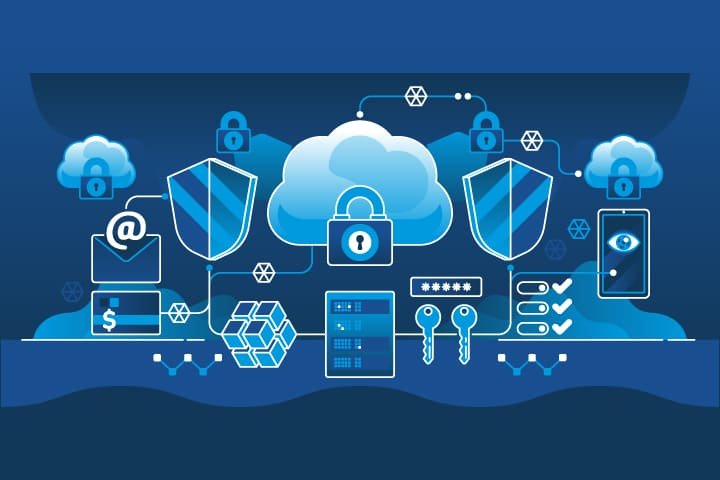As enterprise IT environments evolve to support distributed workforces, cloud-first strategies, and digital transformation at scale, endpoint protection has emerged as a pivotal line of defense in organizational cybersecurity frameworks. The proliferation of connected devices—ranging from remote workstations and mobile devices to IoT endpoints—has exponentially increased the threat surface. In this context, endpoint protection is not merely a technical requirement; it is a strategic business imperative.
This enterprise brief explores why endpoint protection must be prioritized at the leadership level, the essential capabilities to consider when evaluating solutions, and how top-performing platforms are enabling future-ready security architectures.
The Strategic Role of Endpoint Protection in Enterprise Risk Management
In the current threat landscape, endpoint devices represent both opportunity and vulnerability. They enable agility, productivity, and workforce mobility—yet they also serve as potential gateways for sophisticated cyber threats. For enterprises, this duality necessitates a security approach that is adaptive, intelligent, and tightly integrated into broader governance, risk, and compliance (GRC) frameworks.
Failure to secure endpoints effectively exposes the enterprise to:
- Operational Disruption: Cyber incidents involving endpoints often result in service outages and system downtime, impacting core business processes.
- Regulatory Penalties: Non-compliance with data protection laws such as GDPR, HIPAA, and CCPA can lead to significant fines and reputational loss.
- Data Exfiltration: Compromised endpoints are prime channels for data theft, IP leakage, and insider threat exploitation.
- Erosion of Stakeholder Trust: Security breaches undermine investor confidence, customer loyalty, and brand reputation.
From a boardroom perspective, endpoint protection should be seen as a foundational enabler of business continuity, digital trust, and operational resilience.
Core Capabilities of Enterprise-Grade Endpoint Protection Platforms
When evaluating endpoint protection platforms (EPPs) for enterprise deployment, decision-makers must prioritize solutions that offer:
- Advanced Threat Prevention: Combines signature-based antivirus, behavioral analytics, and machine learning to detect both known and unknown threats.
- Real-Time Monitoring and EDR: Endpoint Detection and Response (EDR) capabilities enable continuous visibility, incident investigation, and automated remediation.
- Centralized Policy Management: Unified consoles allow CISOs and IT leaders to enforce security policies across geographically dispersed assets.
- Zero Trust Integration: Support for identity-based access control, micro-segmentation, and conditional access aligned with Zero Trust principles.
- Data Encryption: Ensures protection of sensitive data in motion and at rest, particularly in regulated industries such as finance and healthcare.
- Application Control and Device Management: Restricts unapproved software and manages device compliance within organizational standards.
- Cloud and Hybrid Compatibility: Scalability across on-prem, hybrid, and multi-cloud environments is essential for modern IT ecosystems.
Strategically, these capabilities should align with enterprise-wide digital transformation objectives, ensuring security without compromising agility.
Enterprise Leaders in Endpoint Protection
Based on analyst evaluations and enterprise user feedback, the following platforms represent best-in-class solutions:
1. Bitdefender GravityZone Business Security Enterprise
Renowned for its layered security model and automation capabilities, Bitdefender delivers strong performance in threat intelligence and endpoint analytics.
2. F-Secure Elements
Offers comprehensive endpoint and vulnerability management, enabling proactive defense and streamlined compliance for mid-to-large enterprises.
3. Sophos Intercept X
Uses deep learning to preempt zero-day threats. Notable for its user-friendly interface and seamless integration into existing enterprise security stacks.
4. WatchGuard Panda Adaptive Defense 360
Combines traditional AV with AI-driven EDR and continuous process monitoring—ideal for sectors with high compliance requirements.
5. Kaspersky Endpoint Security Cloud Plus
Provides centralized control and scalable protection with minimal infrastructure overhead, suitable for cloud-native enterprises.
6. Acronis Cyber Protect Cloud
An integrated solution that combines endpoint security, data backup, and disaster recovery—highly relevant for enterprises emphasizing resilience.
7. Symantec Endpoint Security
A trusted choice for large enterprises, Symantec offers robust policy enforcement, data loss prevention, and intrusion detection capabilities.
Strategic Implementation Roadmap for Enterprise Endpoint Security
To operationalize endpoint protection effectively at scale, enterprises should adopt a phased, governance-driven approach:
1. Security Risk Profiling
Begin with a thorough audit of endpoint device types, user roles, and data flows. Identify high-risk zones and prioritize protection accordingly.
2. Policy Harmonization
Align endpoint policies with organizational risk appetite, regulatory mandates, and IT usage policies. Enforce via centralized tools.
3. User Awareness Programs
Develop training and simulations to reduce user-driven vulnerabilities such as phishing or misuse of privileges.
4. Zero Trust Framework Alignment
Implement device identity verification, network segmentation, and context-aware access policies to contain potential breaches.
5. Continuous Monitoring and Response
Utilize advanced telemetry and EDR tools for real-time threat detection and forensic analysis.
6. Governance and Metrics
Establish KPIs and regular reporting to track endpoint compliance, response times, and security posture maturity.
Conclusion: Security as a Business Enabler
In the enterprise context, endpoint protection is more than a security control—it is a strategic asset that enables secure digital operations, regulatory alignment, and reputational protection. Organizations that treat endpoint protection as a board-level priority are better positioned to navigate cyber risks while capitalizing on the productivity and innovation gains of a connected workforce.
The imperative is clear: as enterprises modernize, endpoint protection must scale in both scope and sophistication. Forward-thinking leaders will view this not as a cost center, but as a catalyst for operational resilience and sustainable growth.

